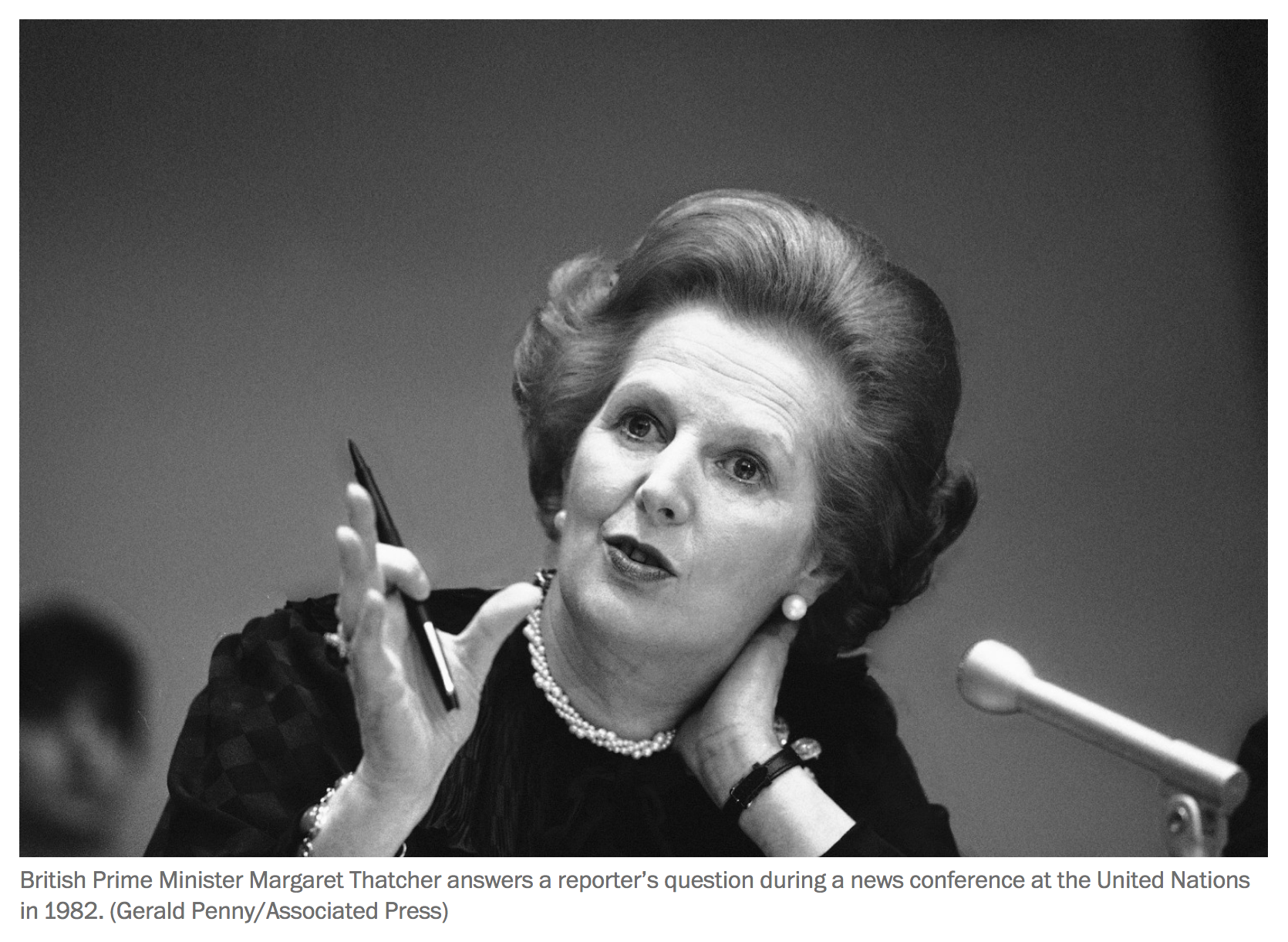As British Prime Minister Theresa May becomes the first foreign leader to visit President Trump, it is a good time to consider that Margaret Thatcher, much more than Ronald Reagan, is the real model for the Trump presidency.
Trump’s inaugural address last Friday had the directness and confrontational tone of a Thatcher speech. The president was clear that he stood for dramatic, bold change and that he regarded his election as a victory of the American people.
Trump’s speech was not designed to reconcile with the Washington power structure. In fact, it was a declaration of loyalty to the American people against that very power structure.
Furthermore, the address represented a direct threat to the value system of the left. In this head-on challenge to power and ideology, Trump resembles Thatcher far more than Reagan.
Reagan was focused on breaking the power of the Soviet Union, not breaking the power of political correctness and the elite media that has increasingly dominated the United States. They were frightened of Reagan, but they weren’t enraged by him.
Trump is a direct, mortal threat to both the power structure and the ideology of the left. The left knows it and is responding just as the British left wing responded to Thatcher.
The young liberal fascists breaking windows and intimidating Trump supporters on Inauguration Day displayed the kind of hostility that Thatcher evoked on the left.
The congressional Democrats’ decision to adopt pure negativity and opposition tactics is much more like the Labour Party’s reaction to Thatcher than then-House Speaker Tip O’Neill’s much more nuanced approach to Reagan. One-third of the House Democrats voted for the Reagan economic program in the summer of 1981. It is hard to imagine that happening in the House today.
The left in Britain became so unhinged with its bitter hostility that it kept drifting further and further out of the mainstream. The term “loony left” became a common description of the Labour Party in the 1987 election.
Today, the hysteria of the American left as the Elizabeth Warren-George Soros wing talks only to its own partisans is becoming increasingly bizarre. Think about the optics of last weekend’s anti-Trump marchers, with their vulgarity and dreams of blowing up the White House. This sort of rhetoric repels most Americans.
Claire Berlinski, in her brilliant book “There Is No Alternative: Why Margaret Thatcher Matters,” argues that Thatcher had two great historic goals. First, Thatcher was dedicated to destroying the moral legitimacy of socialism. Second, she was determined to break Arthur Scargill and the coal miners union, which was the most powerful structure threatening the Parliament’s right to govern.
Thatcher believed socialism was destroying the spirit of individual responsibility, hard work and entrepreneurship, which she felt was at the heart of Britain’s success. Her campaign against the values and principles of socialism was a moral campaign.
Furthermore, she believed Scargill was challenging the legitimacy of a popularly elected government to set the rules.
In Thatcher’s analysis, if socialism prevailed and the coal miners union could dictate its own terms, then Britain as a country would be transformed into a very different place. Thus, she saw her fight as Churchillian in the depth and intensity of the fight and the scale of the stakes.
Trump’s decision to put a bust of Winston Churchill back in the Oval Office is a clear signal of that same resolve.
Like Thatcher, Trump is similarly focused on destroying the moral legitimacy of the left and breaking the power of the lobbyist and bureaucratic establishment in Washington. His actions thus far in office, including steps to restore the rule of law in immigration and move forward with vital energy infrastructure projects, have been consistent with these goals.
It is no accident that May will be the first foreign leader to meet with Trump. The president instinctively wants a much closer alliance with Britain. Where President Barack Obama warned that voting for Brexit would put Britain at the back of the line, Trump believes the vote for Brexit puts Britain at the front of the line. Britain may have had more riding on the outcome of the U.S. election than any other foreign country.
Those who fear Trump’s protectionism might note that one of his first goals is to begin working on a bilateral agreement with Britain (which may become a trilateral agreement if the Canadians are invited in). This is a much more sophisticated president than his critics believe.
This week’s visit may revitalize the special relationship that the United States and Britain have had ever since 1941. Prime Minister Thatcher would have approved.
Source: Newt Gingrich, washingtonpost.com
Newt Gingrich, a Republican from Georgia, was speaker of the House from 1995 to 1999. He served as vice chair of the Trump transition team.
 Listen Online
Listen Online Watch Online
Watch Online Find a Station in Your Area
Find a Station in Your Area









 Listen Now
Listen Now Watch Online
Watch Online
